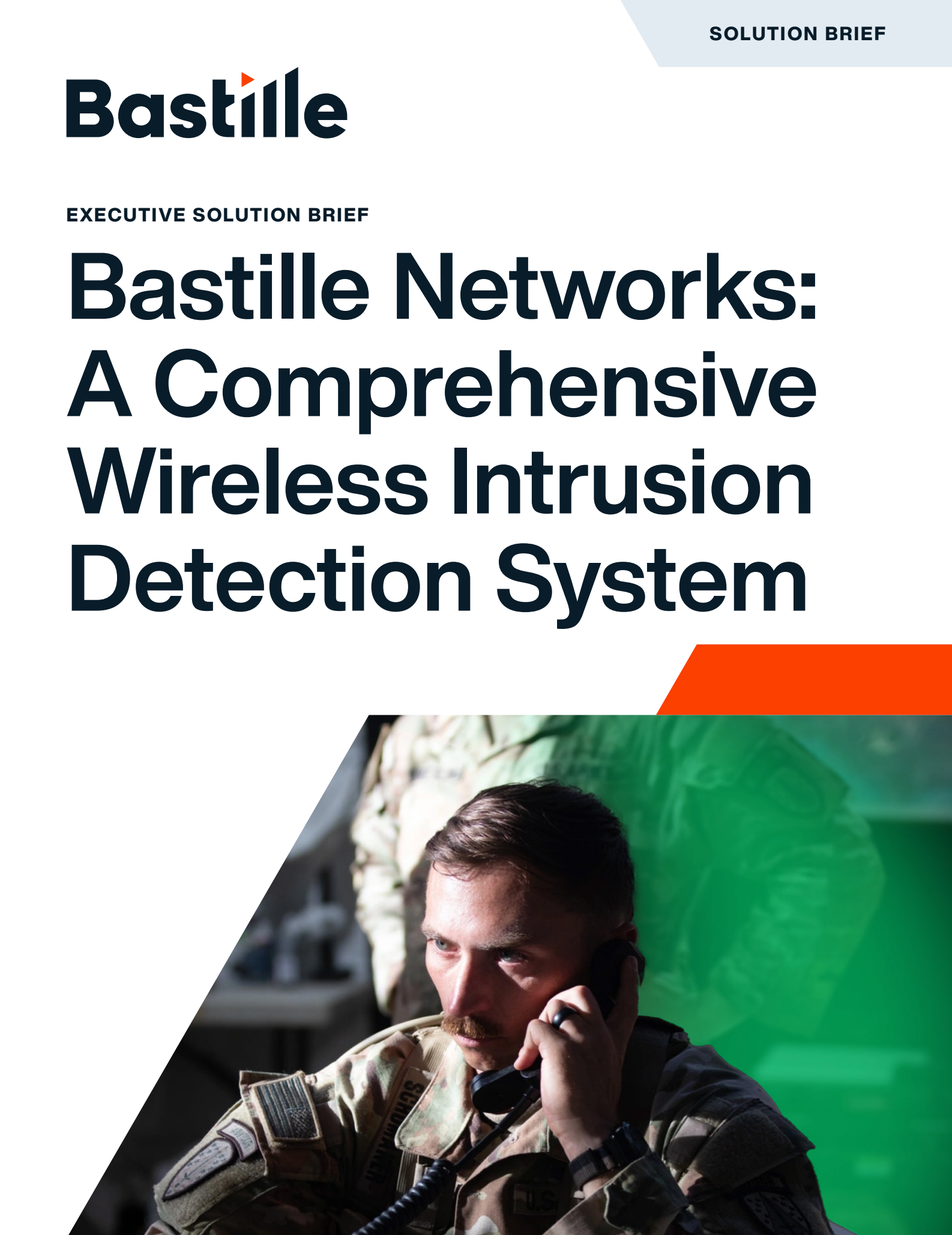
Introduction to DOD and Federal WIDS Requirements
The Department of Defense (DoD) and federal agencies face an urgent challenge: securing facilities against wireless threats. As mobile devices, IoT, and rogue access points proliferate, compliance with Wireless Intrusion Detection System (WIDS) requirements has become mission critical. While some organizations rely on handheld scanners or point-solution devices, these tools fall short. They provide only snapshot views of RF activity, leaving dangerous blind spots in environments that demand continuous monitoring. Meeting DoD WIDS requirements requires more than temporary checks, it demands scalable, facility-wide detection that delivers real-time visibility and compliance assurance.
Challenges in Meeting DOD and Federal WIDS Requirements with a Handheld Detection Equipment
Coverage and Detection Range Limitations
DOD and Federal WIDS require comprehensive network monitoring to detect unauthorized access points, rogue devices, and potential security threats. Handheld point solutions, due to their compact size and lower-sensitivity receivers, have limited detection ranges, making them inadequate for covering large areas or monitoring complex environments such as office buildings, airports, or military bases. Fixed WIDS sensors provide greater sensitivity for increased detection range and, when placed strategically around the building, provide more comprehensive coverage.
Continuous Monitoring Requirements
Federal and DOD sites require 24/7 monitoring capabilities to ensure that any intrusion or security breach is detected in real time. Handheld devices, designed for portable, on-the-go use, are not built for continuous, unattended operation. This intermittent use can lead to gaps in coverage, allowing security incidents to go undetected.
Processing Power and Real-Time Analysis Challenges
Meeting WIDS requirements requires real-time analysis of wireless traffic from cellular, Bluetooth, Wi-Fi, and IoT devices, which involves processing large volumes of data and running complex algorithms. Handheld devices typically lack the necessary processing power and resources compared to dedicated WIDS hardware, which are designed with robust processors and specialized software to handle these tasks efficiently.
Lack of Whitelisting Capabilities
Due to their limited capabilities, handheld devices are incapable of maintaining lists of authorized devices. This is a crucial capability to accommodate exceptions for medical devices such as hearing aids, insulin pumps, and other authorized devices. The inability of handheld detectors to maintain such lists leads to alerts on every electronic device, false alarms, operator fatigue, and the security gaps that inevitably follow. A dedicated WIDS system with appropriate packet decoding and management software is necessary to meet these needs.
Compliance and Audit Logging Deficiencies
Federal and DOD requirements may require detailed logging and audit capabilities to track wireless activity and intrusion attempts. Handheld devices have limited storage capacity and lack the robust logging infrastructure for long-term data retention and compliance reporting. Dedicated WIDS systems are equipped with centralized logging servers and secure storage solutions to meet these requirements.
Advanced Threat Detection and Response
Meeting DOD and Federal WIDS requirements involves detecting advanced threats like protocol attacks, signal jamming, and spoofing. Handheld devices are generally designed for basic scanning and detection tasks and may not support the advanced analytical tools or response mechanisms necessary to counter sophisticated threats.
Regulatory Compliance and Certification Challenges
Handheld devices are consumer-grade or commercial-off-the-shelf (COTS) products. They typically fail to meet stringent regulatory certifications like NIAP, making them unsuitable for regulated environments. They may also emit RF in order to detect wireless devices, rather than being a 100% RF passive solution as with some permanent WIDS solutions. This makes them unsuitable for monitoring secure facilities like SCIFs and SAPFs where active RF emissions are prohibited.
Integration with Existing Security Infrastructure
Federal and DOD WIDS requirements, like those in the Secretary of Defense Memo of June 30th, 2023, require integration with other security infrastructure systems, such as SIEM (Security Information and Event Management) systems, physical security control software, and automated response tools. Handheld devices are not designed to seamlessly integrate with these systems, limiting their effectiveness within a comprehensive security architecture.
Practical Limitations of Lobby-Based WIDS Devices
Gaps in Security Coverage in Entrance Areas
Placing WIDS devices only in entrance areas leaves gaps in security coverage throughout the building. A common tactic to circumvent WIDS detection is for individuals to turn off their phones or other wireless devices before passing through monitored entry points, re-enabling them once inside. Without continuous, building-wide monitoring, unauthorized devices can operate undetected once past the initial checkpoint. Addressing this gap requires a comprehensive WIDS deployment with sensors distributed throughout the facility.
Missed Detection and False Alarms
Lobby-based systems are prone to miss detections due to the bursty nature of wireless protocols. But they are also prone to false alarms due to their inability to decode packets and identify individual devices. Such systems, operating based on power thresholds, are unable to distinguish between one device near the entrance to a secure space and many devices in the lobby or parking lot. This also prevents these systems from accommodating authorized device exceptions, leading to further false alarms. Such behavior limits the effectiveness of the system, often leading operators to ignore alerts or shut the system down. Deployment of such systems leads to a false sense of security, which ultimately weakens the organization’s security.
Conclusion: The Need for Dedicated WIDS Solutions
Handheld and point-solution detection equipment cannot keep pace with today’s federal and DoD wireless security standards. Their limited reach, reliance on manual operation, and inability to provide persistent monitoring create unacceptable risks in environments where wireless threats can undermine missions, leak classified data, or disrupt operations. The solution is a scalable WIDS platform that provides continuous RF visibility, meets NIST 800-53 and federal compliance requirements, and strengthens both cybersecurity and physical security. By adopting enterprise-grade wireless intrusion detection, agencies can eliminate blind spots, protect critical infrastructure, and stay ahead of evolving threats.
Request your demo here.




